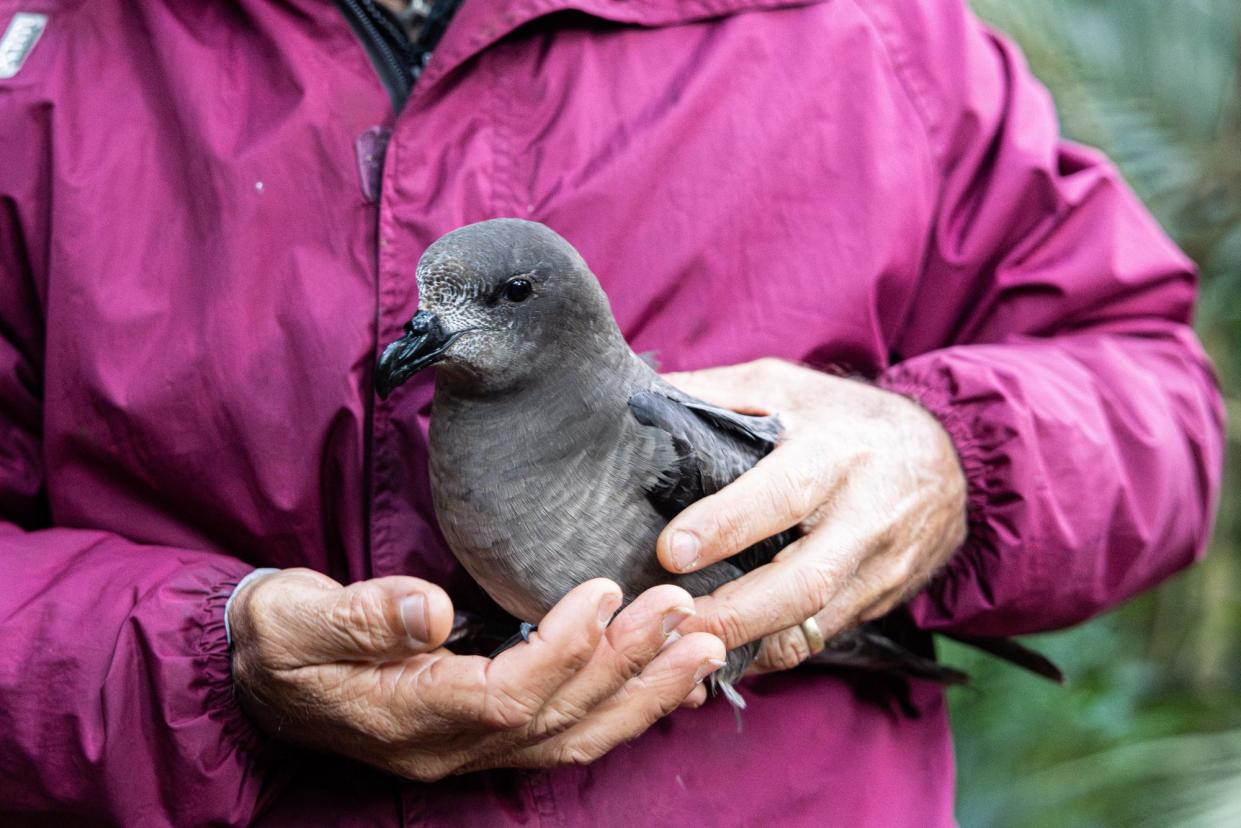‘When, not if’: H5N1 bird flu outbreak could reach Australia this spring, experts warn

Tens of thousands of seabirds swoop and squawk around us but just two come crashing through the canopy.
They are providence petrels, summoned by the quavering, high-pitched call of Jack Shick, a birdwatcher and tour guide on Lord Howe Island. Now he’s cradling one in his hands.
“They’ve just got a terrific character,” Shick says. “The island is their home. If anything happens they are gone.”
News from overseas has Shick worried. A bird flu strain, H5N1, is causing havoc in wild bird populations across the globe and experts have said there’s a chance it could arrive in Australia this spring. The island’s risk is low but it’s ecological value is high.
Australia remains the only continent in the world free from the deadly bird flu variant that, since a new variant emerged sometime in 2020, has caused havoc in poultry populations, wild birds and mammals worldwide. The virus has been linked to more than 900 cases in humans since 2003 and more than 400 deaths, and, since reaching the US in 2021, has spread to dairy cattle. A small number of human cases have also been confirmed in people working in the US dairy industry.
Nicholas Carlile, a seabird specialist who has worked on Lord Howe Island for more than 30 years, says there’s a “very remote” possibility of a H5N1 outbreak because there’s no “credible pathway” for it to reach the island via an infected sea or migratory bird.
And if the virus were to arrive, he says, few bird species live in dense enough colonies to transmit it. The colonies of burrowing species like the petrel have not been shown to have been affected overseas.
“There is still a risk, and we need to be ready for it … and there’s still a lot we don’t know,” Carlile says. “I’ve always said people should be informed, not alarmed.”
Related: Stop the clocks: the cows aren’t confused by daylight saving, but I am | Gabrielle Chan
Australia-wide there is a “moderate” risk the virus will reach the country this spring, as returning migratory birds have the potential to carry it, according to Dr Michelle Wille, a senior research fellow at the Centre for Pathogen Genomics at the University of Melbourne.
“We need to remain vigilant throughout – most likely the first stop [of H5N1] would be in the northern parts of Australia, but we can’t be say that for sure,” she says.
Last year research led by Wille found no evidence of the virus in remote bird populations across the country, including samples taken on Lord Howe Island, but she says the prospect of the strain reaching Australia in the future is a matter of “when, not if”.
Lord Howe Island’s head of biosecurity, Darryl Birch, says members of the island’s citizen science network, many of whom own chickens, have bolstered its defences. The risk of the virus arriving is “low”.
The virus reached Antarctica in February and has killed thousands of Adelie penguins. It has killed an estimated 650,000 native birds since arriving in South America in late 2022, as well as 30,000 sea lions and 17,000 southern elephant seal pups.
A senior scientist at the CSIRO’s Australian Centre for Disease Preparedness, Dr Frank Wong, says Australia is not in the flyways of migratory ducks and geese, the main hosts of bird flu viruses over long distances, so the chance of H5N1 reaching Australia is “relatively low”.
But he says the H5N1 strain has shown the ability to infect a wide range of wild birds, increasing the chance of introduction via a “bridging” species.
The advocacy director of the Invasive Species Council, Jack Gough, says an outbreak in Australia could result in a “wildlife massacre” of similar scale to the black summer bushfires that ripped through the country in 2019-20.
“We were lucky last year, let’s hope we’re lucky again this year,” Gough says. “It could be catastrophic.”
A study released last year found an outbreak of the H5N1 variant would put the Australian black swan in “significant peril”.
Gough says Australia’s geographic isolation has so far kept the country virus-free, but could also mean native bird populations are more vulnerable.
A lack of funding for research to determine the effect on other endemic bird species has left the country even more ill-protected, Gough argues. “This has been a bottom-order priority for the government.”
In July the then federal agricultural minister, Murray Watt, allocated $7m to bolster Australia’s defences against the H5N1 variant. “The arrival of migratory birds … means we face a constant risk that is outside of our control,” he said.
The H5N1 strain is a particularly virulent type of high-pathogenicity avian influenza. State and federal governments are still monitoring outbreaks of several HPAI strains in New South Wales, the Australian Capital Territory and Victoria.
The chief operating officer of Wildlife Health Australia, Dr Tiggy Grillo, says educating communities who live near migratory bird nesting sites about the signs of avian influenza, as well as surveillance and early reporting, would be critical to stomping out an outbreak.
Anyone who sees a sick or dead bird is asked to call the emergency animal disease hotline on 1800 765 888
Join the Rural Network group on Facebook to be part of the community


